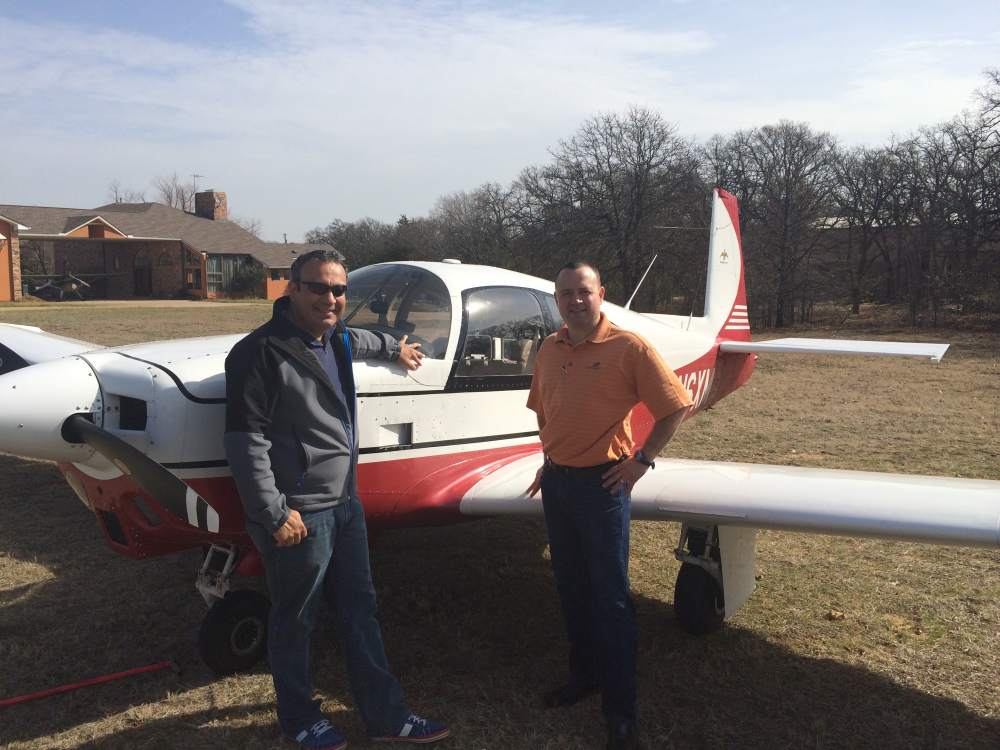Leaderboard
Popular Content
Showing content with the highest reputation on 03/18/2021 in all areas
-
Oh, for me, this is absolutely more of the long-term play. I have loved the process as much as the simple ownership and ability to fly when I want to (weather and wife permitting!). I know everyone has very different opinions regarding maintenance and operations, but for me, the more I am involved with the maintenance, upgrades, and restoration, the more aware of the plane's 'personality' I am. I am more in tune when something 'feels' off or sounds different. Plus, I have always loved mechanical work and working with my hands. Doesn't mean its right for everyone, but its right for me!5 points
-
Hey All, I've been prototyping this with the Beechtalk community and thought it might be a good idea to post here....The short story on how this came to be was I was thinking about spark plug maintenance and decided to make a plug holder. I couldn't keep the cylinder numbers and the rotation order clear in my head and wound up making and 3D printing this thing that turned out to be pretty handy during spark plug cleaning, gapping and rotating. Here are the highlights - after many iterations : - Continental and Lycoming versions - 6 Cyl and 4 Cyl engines - Works with Champion and Tempest plugs (although they are the same size...they have different geometries) - Flex TPU insert/liner holds the plug snug - Grip slots on the bottom - With or without N number added - Measures just under 8"x 8" Some pics attached I can make more .... just message me. ....Brian D.4 points
-
So when it's all said and done, you'll have spent $75K for a $45K airplane. Not to mention all the down time that you could have been flying.4 points
-
Let's see, what does a $50K M20C look like. Currently in annual and airworthy It will be flying regularly, probably between 50 and 100 hours per year. 100 is better. Complete logs or at least complete for the last 30 years ADSB out Everything in the panel will work, except for the ADF. It will have at least one, and probably two, of the following: Autopilot - Stec30 or better WAAS GPS - GNS430W or better Mid-time engine between 500 - 1000 SMOH Note: to rectify any of the above three items is a $20K bill. You will feel comfortable to hand over the check, pick up the keys and fly it for the next 12 months without doing anything to it.4 points
-
Total M20K's with TKS = 102 89 no-hazard systems and 13 FIKI.3 points
-
I used to own a QT headset - after wearing it on and off for about 6 months I found eventually I was not wearing it, grabbing consistently for my trusty Bose A20. I seem to be one of those rare people who just didn't grove on the Qt. I didn't like squeezing the tips into my ears and I never got used to the feeling of things in my ears. I like that a standard headset allows me to use an oxyarm for comfortable o2, which is something I may or may not use on a given flight but always using a20 means I don't need to think through if I will or won't. I wear a baseball cap most of the time when I fly because I like it for shading the sun. I don't care what my hair looks like. When my hair starts to become an issue - time for a haircut. E3 points
-
Sorry, but no. LOP works very well at high power settings and is indeed cooler for a given output. This is easily seen in turbo engines but can also be demonstrated in NA engines at low altitude. Where I live in the mid atlantic we see DAs in the winter that are more then 3000' below a standard day. It is not uncommon at all to see SL DA at 3000AGL. When fighting headwinds I often fly at low altitudes with the engine WOT ram air open and LOP. Under said conditions the engine will make somewhere in the vicinity of 80% power on the lean side of peak which can be confirmed by IAS. The trouble is keeping the coolest CHTs above 300°. You are correct that CHTs track power output but that is not the full story. Power is a function of mean cylinder pressure not peak. A cylinder can make the same power with lower peak pressure through the power stroke if the pressures are more even during the power stroke. For a given output, ROP operations tend towards higher peak pressures and higher CHTs. LOP operations tend towards lower but more consistent pressure throughout the stroke and lower CHTs. The late great Walter Atkinson described it to me as the difference between a hammer blow and a steady push. Two different ways of doing the same amount of work.3 points
-
I say $20 to $25k max for the plane. You will spend $50k over the next 5 years on the plane for any combination of radios, AP or engine. Get a good PPI (pre-purchase inspection) turn the PPI into an annual. Required in this case so you can fly it home. Start at $30k and negotiate down from there for any airworthy issues found during the PPI this includes AP issues, any AD's not compiled with. Make sure the current owner agrees to this plan if not move on to the next one. Essentially you agree to pay him $30k and you get a flying plane with no airworthy issues and all ADs complied with. The Britain AP parts are hard to come by especially the servo boots so the AP may be toast. A new AP costs plenty. Although it is not necessary it is very nice to have on long flights. The PPI / annual is probably minimum $6k maybe a little higher up to $10k. I am always in favor of someone taking a less than loved plane and bring it back to it's full glory. Has the plane been in a hangar for the past 5 to 10 years? Where is the plane located? Go into this project with you eyes open knowing you will spend money on it.3 points
-
An airplane out of annual is scrap and worth not one penny more in the Book of Steingar. If these jokers really want to sell the airplane they can get it in annual. If not, don't walk, run. The owner is either flying it out of annual, meaning he doesn't give a crap about the rules (bad sign), or he's just been spooling up the engine now and then (worse). I bought an aircraft hat wasn't flown much. But it had annual inspections every year, indeed it was taken apart when I inspected it. Mooney made lots of airplanes. Find another. Oh, and repeat after me: there are not bargains in aviation...there are no bargains in aviation...3 points
-
As a D converted to C owner, I can give a thumbs up to the model. Considering what I paid for it a couple of years ago for mid-time engine, new prop, GNS430 two G5's and ADSB, the $50,000 asking price for the one you're looking at is more like the price of what you need to put into it. An engine at TBO that has not run or run much in 10 years is a gamble I would not be willing to take. If I would take the gamble I would never fly it at night, in IFR or put my family in it. If REALLY wanted it, I would be offering in the $20 to $25K range and planning on ordering a factory reman or having the current engine overhauled by a reputable shop, but chances are they are going to find corrosion inside. So there goes around $25K for the engine. If the prop needs significant work, might as well replace to not have the recurrent AD, that's $9-$12K depending on what you choose. Then there are things like the sealant in the tanks to worry about and if that needs redone, $7,400, all the accessories, etc. Plan on a reserve of $5 to 10K to have on hand for the incidental aged and unused items that will likely break. I think you can see where the "needs $50K of work" comes from. Sure, there is a chance the engine runs fine with little issue for another 500 hours. There's also a chance a rich old woman with one foot in the grave and the other on a banana peel falls in love with me and gives me a TBM 950 for my birthday. LOL Seriously, when I looked at a few similar planes, my A&P advised, "why should you finance someone elses risk? He thinks it's worth $50K make them prove it, give him three months to get if airworthy and tell him you want him to put 50 hours on it and you want to see the oil analysis reports from the two oil changes during the 50 hours, then we'll talk $50K, otherwise it's $20K and I will take the risks and you walk away. If lucky you have a plane and a hell of a lot of gas an reserve money, if not lucky you will have a very nice airworthy airplane and no gas money". I actually tried that tactic and the owner of the "other than Mooney" took it as a challenge and going to show me, so he accepted. Eight hours in, the engine came apart and safely deadsticked back to the airport, no deal. The A&P may have saved my life, that could have been me on the way home with it. Buying a plane is just another aviation lesson in identifying the mission and managing risk. Do you want to get in and fly for hundreds of hours, or do you want to take the time and money to personalize everything to your personal taste, realizing you'll never get the full amount back? As for risk.... let's face it there are many NTSB reports of brand new engines with few hours on them coming apart too. All up to you and what you're up for. But if you pay the guy $50,000 for the plane as you described it, he owes you big time.3 points
-
Nothing in this reply tells me that you are dealing with an owner who loves his airplane. It sounds more like a guy who cannot afford the airplane now, or never could afford it, or circumstances changed where he cannot take care of it. This is not someone who loves this airplane. Someone who loves the plane would either do what it takes to keep the airplane in good condition (in annual, etc...) or sell it before it became "dirty and stinky with disaster lurking...." not someone that would fly with reckless abandon and fly out of annual etc... I may be wrong, never having met the owner, but it sounds like someone who just liked the idea of telling people..."yeah, I own a plane...." With other airplanes available that have been loved and cared for, I am not sure I would proceed with this one. As many have stated you will spend a fortune getting this airplane up to the point where you want it to be. Your pocketbook better be ready to handle the outlay of expenses it will take to get this plane up to par. You can take all that money and buy an airplane that is turnkey and ready to go.3 points
-
The law of airplane purchasing: It is worth your time to buy as much airplane as you can afford, with the features you want, because whomever got it into that condition will not recoup their investment. The corollary of this law is, if you buy somebody else's neglect, you will pay for it, and nothing in aviation is cheap. You might pay with your life. I agree with @MikeOH - RUN!!!3 points
-
I'm going to be blunt: This isn't a project, it's a disaster for a first time owner. Run, Forest, run! $30K isn't ANYWHERE near low enough to even consider. Seriously. My read/opinion is that you have a limited budget to buy and think you can put sweat equity in and 'make up for it.'. Sorry, not going to happen for a first time buyer and not an A&P. I had to wait many years for finances to align such that I could buy an airplane to FLY; I, too, toyed with the idea of a 'fixer-upper' Good luck, whatever you choose to do.3 points
-
Thanks all for the input. I think I'm going to go the IRAN route. When the dust settles, the overhaul is quickly pushing $30k ... whereas IRAN, with new cam and lifters, is half that. I may do a few bottom-end things and may get the prop IRAN'd too - preventive stuff. I'll still be $12-15k ahead - and the engine is not even half time (900 hours). That gives me ~8 years to plan for an overhaul --- maybe more, maybe less, but who knows either way even with an o/h.3 points
-
I don't find that to be the case. With a nose up attitude of about 8° at touchdown you can and should see at least two centerline strips ahead. If you don't, then you flared too much too soon. It should never be necessary, and is in fact dangerous in my opinion, to look out the side window prior to touchdown. You might not be on centerline and might be drifting. I've flown and taught in all model Mooneys except the D and G and none of them have an obstructed view of the runway at touchdown if flared properly. All Mooneys, and for that matter all airplanes, land the same if flown with a stabilized 3° glideslope and with the proper airspeed +/- 1 knot.2 points
-
When I finished by PPL 150 years ago, I bought two pairs of DC H10-13.2S headsets. One of them I upgraded with the Headsets, Inc. kit, as several others have mentioned above. I don't think I've ever had a better headset at noise reduction (the DCs are far far better than the lightweight ANC headsets at passive reduction - they seem to depend almost entirely on ANC - and the Headsets, Inc. ANC does just fine). I've now been through a series of Bose headsets, and I don't think they've ever really beaten the DCs on perceived noise level, though they are much lighter and maybe more comfortable on a long flight. One thing I'll say about the DCs - they're built like a tank. I'm pretty sure I could throw a DC headset at a wall, pick it up, put it back on, and never notice. If I threw my A20 at a wall, I'm pretty sure it would explode.2 points
-
It is a $45K airplane that needs a $25K engine and $10K of additional work (maybe more). $45K-25K-10K = $10K is what it is worth. Walk away unless you can get it under $10K. Planes like this end up with the reaper because the owners think they have something special and are delusional. Or they end up with someone who doesn't have a clue and wants to dump a whole lot of money into something that they shouldn't.2 points
-
2 points
-
I own both Lightspeed Zulus, and a QT halo. I wear the QT for flight instruction in Cessnas, but I use the Zulus in the Mooney, and the occasional other, louder aircraft. For whatever reason, I just can't get enough noise suppression with the QTs for them to be pleasant in louder aircraft. I've tried all the different tips: rubber, silicone, yellow foam. I can hear the radio and intercom fine, and I'm sure they're doing a reasonable job of filtering out the most damaging amplitudes/frequencies. But they are undeniably, unquestionably, poorer at reducing overall ambient noise than any over-the-ear, active ANR headset I've ever worn. I read stories all the time from people who say QTs and/or Clarity Aloft in-the-ears are just as good, or even better, than an over-the-ear ANR. But I simply don't have that experience. It's entirely possible this is just a function of my ear anatomy. One thing I haven't tried yet - but will do so when I get around to it - is custom ear molds for the QTs. I know the developer pooh-poohs them, but several folks I know use them, and it might bridge the gap in performance. The QTs are certainly comfortable, and I want to like them a little more than I actually do.2 points
-
You should have yours adjusted, that's well below the Lycomimg spec for 100% power (@ 35" & 2575 rpm)2 points
-
2 points
-
Need a 3rd option for question 3. I run QT Halos 95% of the time, my pax have premium anr lightspeeds.2 points
-
Back when I owned an M20C, I was in and out of quite a few airports above 5000 ft. I don't have any hard numbers for you, but there weren't any issues. I was generally at gross weight and flying out of airports with long paved runways. FLG - 7014' WYS - 6649' BJC - 5673' APA - 5884' SAF - 6438' ABQ - 5355' On one trip west with my wife, we were debating during the flight where we should stop for the night. We were considering FLG and she was online looking for lodging. It was a warm summer afternoon in July. I told her if we landed in FLG, we were definitely there for the night. The DA on the ground was over 11,000'. I didn't think there was any way we could take off again that afternoon. We landed, spent the night, and took off in the cool early morning easily. Taking off out of WYS in the middle of summer, we had to circle the airport a few times to gain enough altitude to get out of the valley and across the high terrain of Yellowstone. But it wasn't a problem. I don't think my M20C was ever still on the ground at the 3000 foot mark. But I probably wouldn't want a high altitude airport with less than 6000' of runway. Full throttle, full prop, and keep adjusting the mixture to give you best power and yet stay under 400° or so.2 points
-
One may be able to get a NA aeroengine to detonate but I do not agree that it's anything near a certainty, especially in level flight. I have done some pretty extensive high power experimentation at sea level DAs with my IO360 and have never seen engine data that would suggest anything nearing detonation in level flight. I think that I could get a NA certified aeroengine to detonate if I tried really hard but it would require determination and deliberate abuse of more than just the mixture. Perhaps something like sustained full throttle while leaned for max power at near SL with the airplane at high pitch behind the power curve and cowl flaps closed. Even then it would take more time to get there than any sane person would want to spend. Also, pre-ignition is not caused by mixture as you appear to suggest in the above quote. Pre ignition is an ignition source other than the ignition system that starts the combustion event in advance of the ignition system. It could be caused by a damaged spark plug electrode or a detached thread from the spark plug or a helicoil that protrudes into the combustion chamber or a carbon deposit or any other object in the combustion chamber that has absorbed sufficient heat to ignite the mixture in advance of the ignition system. As Skip suggests in the original post the two event are very often related. Pre-ignition often leads to detonation and detonation can lead to cylinder damage which can cause pre-ignition. The good news is that one you've holed the piston they both tend to stop...which I learned first hand riding to San Francisco on an old Triumph single that started the journey from Santa Rosa as a twin.2 points
-
He doesnt love that airplane and it doesnt love him. You have no idea what hes done or not done to the airplane to keep it flying illegally. I honestly would not even bother talking to a mechanic. Dont fall in love with the first airplane you see.2 points
-
I might have to dig up the old list again. We've been hit with another rash of wannabe owners jumping into project Mooneys.2 points
-
That's not an autopilot... or not one worth talking about. Autopilot = Stec30 or better.2 points
-
That’s not a plane that’s a project. Do you want to fly or work on it? If the owner thinks it’s worth 50k it will be hard to get him to reality. That’s a plane that will sit and rot then get parted out.2 points
-
Pre-ignition is NOT the same, nor is it similar to detonation, but it can lead to detonation. ‘The difference is normal ignition whether it be pre or on time consists of an ignition source where a flame front proceeds at a set speed across the combustion chamber, ignition does not necessarily come from the electrical system, it can for instance be a hot piece of carbon etc. The speed at which the flame front proceeds is set, it’s why on engines that have a much wider RPM range that ignition timing is advanced with RPM due to the shorter period of time there is for the charge outreach peak pressure, and why set timing works well on aircraft engines, because we operate at a narrow RPM band. ‘Now where detonation differs is that there is no ignition source, the entire fuel / air charge goes off at once, there is no source that a flame front proceeds from, it’s an instantaneous ignition of the entire charge. ‘That’s why detonation is so destructive, it’s because there is a huge nearly instantaneous increase in pressure, well above any pressure you will get from an ignition source, and why it often blows holes in pistons, heat follows pressure, and or can cause detonation. Chicken or egg? ‘You certainly can get an NA engine into detonation, Fly full throttle at sea level and start leaning it out, it’s likely you may get detonation and or pre-ignition. ‘It’s what makes me nervous when I read the dissertations on how to run LOP where people are advised to simply increase Manifold pressure to recover any airspeed lost from being LOP, but aircraft haven’t been blowing up engines so it’s apparent that it works, but I suspect that in reality there just isn’t any throttle left to increase, most seeking efficiency go higher, and if your N/A above 6 or 7 thousand it’s likely your full throttle anyway.2 points
-
I thought about doing that. I wasn’t worried about the wing breaking. I would never have sold a plane to somebody knowing it had a problem. It will cost me some money now but I plan on keeping it for a long time and pain is temporary.2 points
-
I think the step is there because the panel to the left of the radio stack is shock mounted. At least it was on my C. I haven’t seen evidence of that in my F.2 points
-
I've found a reasonable Mooney for sale that has 0 logs for the last 20 years. I have beautiful logs 1989 - 2001. Here's what I know: No NTSB reports for the aircraft for incidents I have in hand all the FAA records you can purchase, nothing scary there I know I'll need to re-certify every single AD since 2001 I have in-hand engine major overhaul paperwork in 2014 and complied AD's for the engine installed I have proof the current engine time is 80 hours. Once I have redone all the outstanding AD's have those in a new log book and rebuild the pieces that I can will that improve the value of the aircraft or should I offer the seller 1/2 the value of an equivalent Mooney for not having all the logs?1 point
-
Did a little sleuthing with the wayback machine. This document is no longer hosted online but available on the archive. I saved it in .pdf format for your enjoyment. Looks like the lightly modded bird in the Eval was a 140 to 145kt bird. M20G Evaluation Report.pdf1 point
-
1 point
-
And this just reinforces, once again, the awesomeness that is Mooneyspace.1 point
-
I gotta say I’ve had nothing but good purchasing experiences from them. They have pretty much every weird little fastener, some milspec stuff and I usually get items the next day via ground (used to in PA and the same here in NC). Also their app / website is one of the most easy to navigate and organized to find exactly what you need in a couple of click. I just ordered some threaded rod and fasteners to do some suspended shelves from my garage and once again am a happy customer.1 point
-
Somewhere along the way... Everyone gets to decide... Big G... or the other guys... The other guys can have some pretty good things... but integration is at your own risk... If you like building your home stereo system, knowing every component... then other guys is probably really good.... Big G has a good audio panel... The other guys make a really good audio panel... Big G has a good transponder... The other guys make a really good transponder... PP thoughts only, not a systems integrator... Best regards, -a-1 point
-
My experience with myself and others is that if you prove yourself to be competent and have a good relationship with an IA, most are willing to work with you. Especially with a Mooney and they don't want to do the work. I wouldn't call it rare, I'd call it pretty common, but maybe it's been my locations and my circles.1 point
-
I think you are right. I had by folklore been under the impression there was a more general formula but now I am doubting it. Its Eq 6 that caught my eye a number of years ago when it first came out (actually I saw him give a talk at a conference and immediately download the paper). This is a connection between the question of normality to a dynamical system, Eq 6 and questions of its ergodicity. I don't actually normally (pun) work in pure math questions like the normality of pi but I was delighted to see it reduce to a question of dynamical system that I normally just work in more applied settings.1 point
-
1 point
-
Cs are great planes! Price this as needing an engine overhaul since it's right at TBO. Then start subtracting-- What shape are the tires in (dry rot)? How are the tanks? They should be stored at least half full to preserve tank sealant. Or they leak . . . $7000 repair, plus transportation. Radio age? Gyros functional? Are the windows crazed from outside storage? Paint condition Interior condition So many things in a plane deteriorate when it sits unloved for several years . . . . .1 point
-
A long time mechanic once said "The log books will always reflect the condition of the logbooks...if your lucky the logbooks will reflect the condition of the aircraft"1 point
-
My Tesla 3 gets about 3.8 miles per kilowatt hour. The Nissan Leaf about 4.3 miles per kWh.1 point
-
Insurable. Basically no one ever asks about complete logs in underwriting. They do ask hours SMOH very often though1 point
-
For the aviation lawyers. First look up who is responsible for determining whether an alteration is minor or major. I’m certified to make that call. So far as hiding my identity etc, 10 ply tires pale in comparison to what I read daily about what you non certified people are doing under the guise of “hanger elves.1 point
-
Sure, I don't disagree with your logic. But the quotes are what they are, possibly just because that's what the market will bear around here. Mainly just cautioning the OP and others reading the thread to get actual "walk-away price" installation quotes to determine the cost difference when making their own decision. If you've got the time and a good relationship with an A&P, and you're handy enough, you can do some/all of the installation yourself. For the DIY club, the points about fewer connectors/mounts/etc. with the GI-275 are certainly attractive.1 point
-
Some shops are still charging the early adopter price as they have not done them before. Their is no reason as to why the cost to do the GI-275 should be more then the G5: The consumables are cheaper You don't need to make mounts for the GAD29B and the GAD13 Less connectors to make up In most cases the only modification to the panel is to drill out the #6 holes for #8 holes for the instrument itself The number of connections required are dramatically less if your navigator supports HSDB vs ARINC only on the legacy GNS units The G5 harness and Install took me 19 total hours. To do the GI-275 MFD and GSB15 was 6 hours from opening the box to flipping the master on. The connections are no different between the BASE and the ADHRS unit other then not needing the GMU 11 connected.1 point
-
The difference is probably $1000 which on a big job like this, is pretty insignificant. It might be a good idea to fly it to Jewell and let him do the R&R on the engine. There is some anecdotal evidence that the service might be quicker if you fly it to him. So if it's just the engine overhaul, and if you don't have a long relationship with an existing shop, I'd probably fly it to him. Another one of our friends here in Denver is likely going to use Jewell in the near future and I've recommended he fly it there. There have also been a few engine lost in shipping lately... I elected not to fly it to Jewell for two reasons. I'm also doing the Encore conversion at the same time and wanted JD (a shop that knows what they're doing with the conversion) to handle that part of it. I was also getting an annual and some other upgrades done. I've got a long history with JD and the bill is never a surprise. So I wasn't going to take the risk of a new shop going over my airplane on a $50K+ project. BTW... I see you're at Hidden Valley. I learned to fly there quite a few years ago. That is still probably the shortest runway where I've landed the Mooney. Landing 17 (it used to be 16) you have about a 50' patch to put the wheels down. Any longer and you'll never land as the runway is dropping away from you, any shorter and you auger into the side of the hill. My brother and I at 5TX0 with my first Mooney, having just picked it up.1 point
-
I had to do this last year due to COVID. First I downloaded the PDF form, filled it out, and sent it to the FSDO email I found online. Crickets and I was starting to panic. then somehow I found this, and it is NOT easy to find--I only just re-found it by going all the way back to last April in my inbox: awc.faa.gov//awcexternalapplicant Ii went there, filled out the online thing, and I had the ferry permit the next day. I never, ever heard from anyone at the FSDO about the PDF submittal. so try this. PJ1 point
-
After attending the APS course with Ada, OK at GAMI, I was persuaded that the need to let turbo's "cool down" is actually a myth, old-wives tale, etc. The turbo bearings and surrounding oil is as cool as it will get when touching down. Sitting on the ramp letting it idle, only serves to heat the bearings and oil back up. Consequently I've never sat at idle to let the turbo "cool down". It certainly didn't have any adverse effect on my turbo. We sent it off for overhaul as part of the engine MOH, with 1830 hours on it. The shop sent it right back saying the turbo is in pristine condition and needed nothing. I guess we'll go another 1800 hours on it.1 point











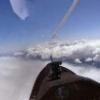
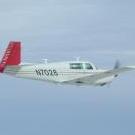

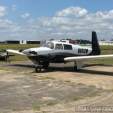
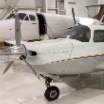




.thumb.jpg.44bc5ad17b44ec09b48bdca2a82f7a76.jpg)
